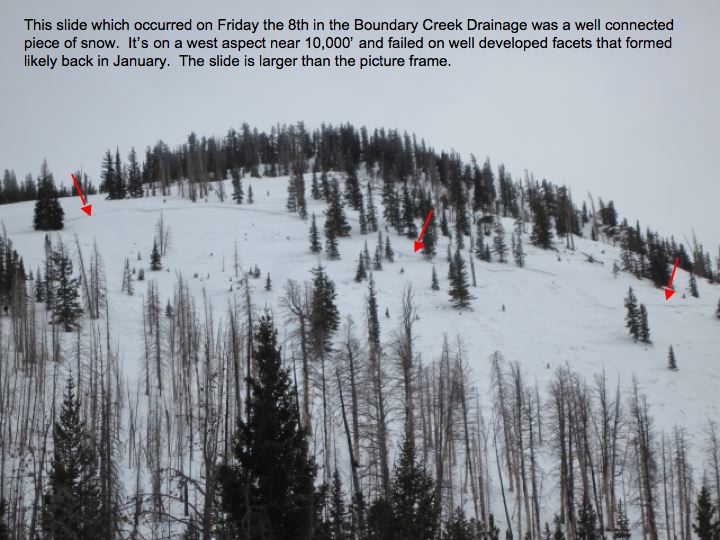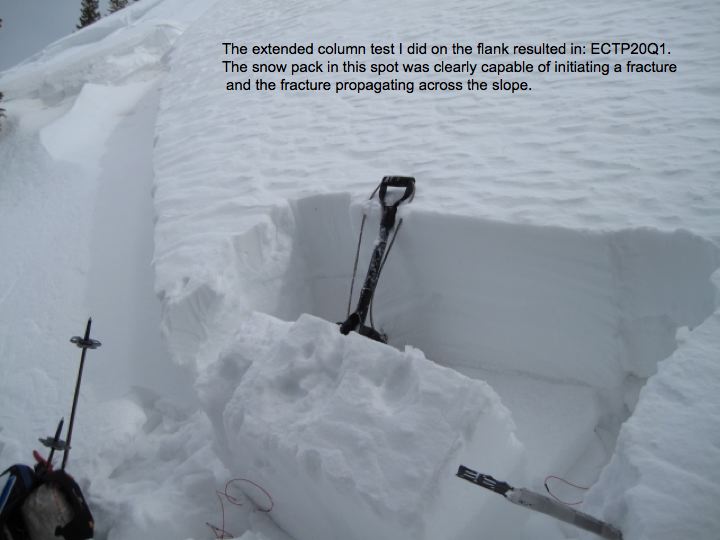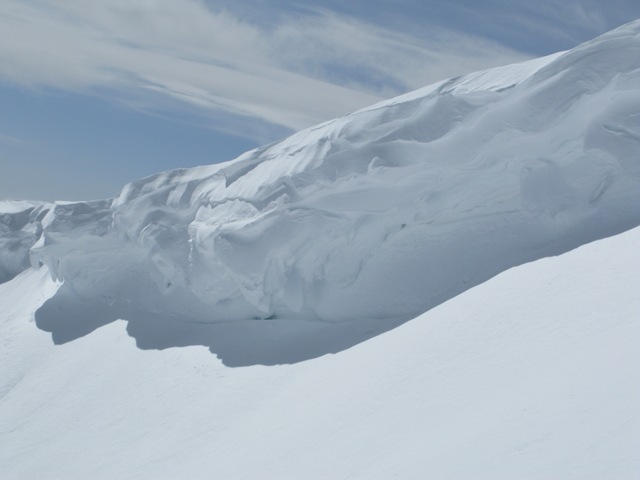High pressure is building and skies are clear this morning. West and northwest winds are blowing 15-25 mph along the high ridges and temperatures are in the low to mid 20's. On a go anywhere base, the surface snow remains cold and creamy on upper elevation, wind sheltered, shady slopes.
Recent observations can be found here.
Our entire Uinta weather station network is up and running. A link to real-time wind, snow, and temperature data can be found here.
This monumental achievement couldn't have happened without the joint efforts from the National Weather Service, The Heber-Kamas and Evanston Ranger Districts, Park City Powder Cats, and all the great work by Ted, Trent, Cody, and Al. Thanks to everyone... this is awesome!
Wondering why last winter was so crazy? Click here to watch the 2011-12 Utah Winter Review... an excellent recap of last years conditions.

Yesterday, Ted took a look at this slide near the Boundary Creek Yurt which was remotely triggered Friday as a group of skiers were ascending the slope. Averaging 2' deep, 500' wide, and running about 600' vertically, this slide broke into a weak layer of faceted snow formed during the cold dry spell in early January.
Click here for the rest of Ted's great report of this eye opening slide.
Click here for recent observations from the region.










